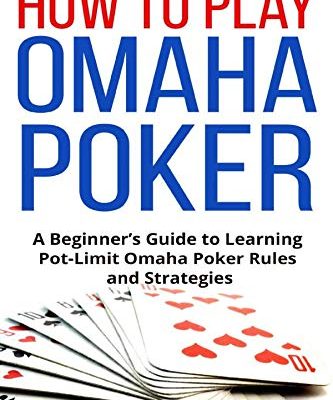Content Table:
Learning to Play Omaha Poker
In this article, we will cover the basics of playing Omaha Poker. If you are already familiar with Texas Hold’em, you should find it easier to grasp the fundamentals of Omaha. However, be cautious if you come from a Hold’em background, as there are important differences and potential pitfalls to be aware of, which we will discuss later.
How to Play Omaha
Omaha is played in a manner similar to Texas Hold’em, with several key differences. The most significant difference is that each player is dealt four hole cards instead of two. To create the best hand, players must use exactly two of their hole cards along with three of the five community cards on the board. The hands are ranked the same way as in Hold’em, with a Royal Flush being the best possible hand and a High Card being the lowest.
Understanding the Nuances of Omaha
It is crucial to remember that Omaha is not just a variant of Hold’em. Being dealt four cards does not mean you have two extra hands; instead, it effectively gives you six possible combinations. This increased number of hand combinations leads to more variance in gameplay, and bad beats are more common than in Texas Hold’em. Just because you have a strong hand on the flop does not guarantee that you will win. Your opponents will often have many outs available to them.
For instance, if you hold Ac Ad Ks Kd and the flop comes 3c 4d 7c, you might feel confident in your hand. However, the presence of potential flush and straight draws means that other players could easily surpass you. Additionally, if a pair appears on the board, there’s a high chance that someone could be holding a full house or even four of a kind.
Another essential rule in Omaha is that you must use at least two of your hole cards to form your hand. For example, if the board shows four clubs and you hold Ac with the other cards being of no value, you do not complete a flush. This rule can lead to some unusual scenarios. Imagine the board shows Q K Q K 10, and you have A J. You might hit a straight, but if another player holds A K, they will have three of a kind (KKK) with an Ace kicker instead of a full house. This aspect can be particularly perplexing for players transitioning from Hold’em, where using your hole cards is not a requirement.
Other Versions of Omaha
Omaha also has variations, with the most notable being Omaha Hi/Lo. In this format, there are two separate pots available to win: one for the high hand and another for the low hand. To win the low pot, you must use the five lowest cards made from two of your hole cards and three on the board (with the best low hand being A2345). In this scenario, flushes, straights, and pairs do not count for the low pot. The player with the best five-card combination wins the high pot.
Getting Started in Omaha Poker
If you are new to Omaha, it’s best to start at lower-stakes tables. Games like $0.02/$0.05 are ideal for beginners, allowing you to gain experience without significant financial risk. Explore different formats, including Pot Limit and Fixed Limit tables, although Fixed Limit games are becoming increasingly rare. You might also want to try Hi/Lo tables; however, new players may feel uncomfortable at these tables initially, which could provide an opportunity for more experienced players to exploit.
In summary, Omaha Poker is an exciting and complex game that offers a fresh twist on traditional poker. By understanding its unique rules and nuances, players can enhance their skills and enjoy a rewarding gaming experience. Whether you are transitioning from Texas Hold’em or diving into poker for the first time, Omaha has something to offer for everyone. Happy playing!



